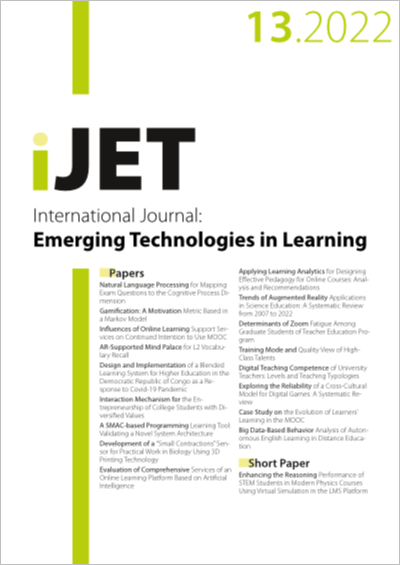Determinants of Zoom Fatigue Among Graduate Students of Teacher Education Program
DOI:
https://doi.org/10.3991/ijet.v17i13.31511Keywords:
graduate students, teacher education, videoconferencing, Zoom fatigueAbstract
Videoconference applications gained popularity when online learning became the new way of delivering instruction at all levels of education including graduate programs. However, excessive videoconferencing led to reports of fatigue among its users. Identifying the factors contributing to the videoconference exhaustion experience of graduate students is necessary. This study examined Zoom fatigue and selected associated factors among graduate students. An electronic one-shot survey using the Zoom Exhaustion and Fatigue scale was conducted among 109 graduate students of the College of Teacher Education in the Philippines. Correlation and predictive analysis were performed. Results of the study demonstrated a moderate level of Zoom fatigue with the highest level of fatigue in the general fatigue dimension. Pearson’s correlation analysis revealed a significant inverse correlation between attitude toward videoconferencing and Zoom fatigue. Non-verbal mechanisms of mirror anxiety, feeling physically trapped, hyper gaze, and cognitive load in producing non-verbal cues were significantly positively related to Zoom fatigue. Regression analysis revealed that the sense of being physically trapped and cognitive load in producing non-verbal cues remained significant predictors of Zoom fatigue. While videoconferencing supported educational activities and made schooling possible during the global disease outbreak, it is recommended to be mindful of the non-verbal factors contributing to Zoom fatigue.
Downloads
Published
How to Cite
Issue
Section
License
Copyright (c) 2022 Rome Moralista, Ryan Michael Oducado, Baby Rose Robles, Daisy Rosano

This work is licensed under a Creative Commons Attribution 4.0 International License.



